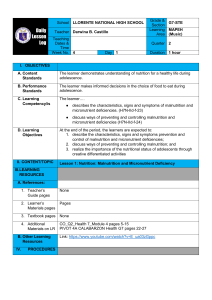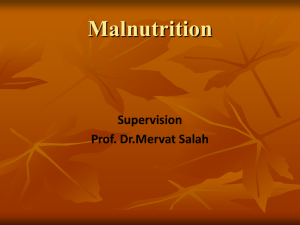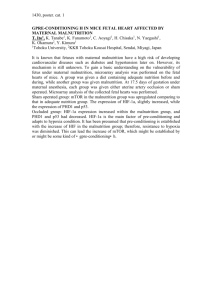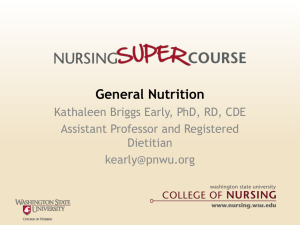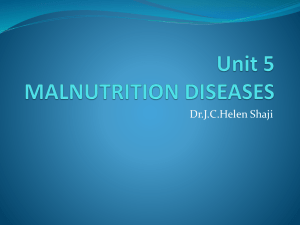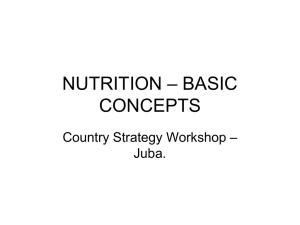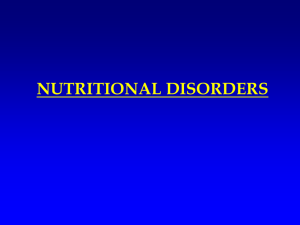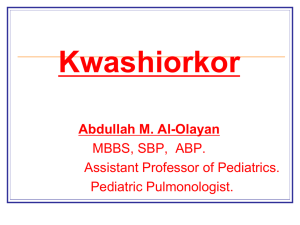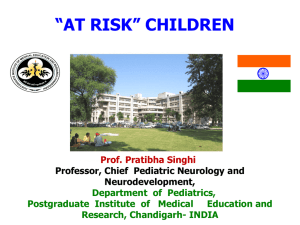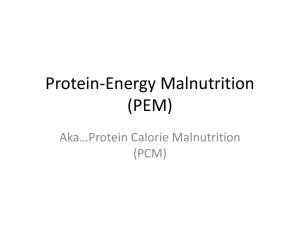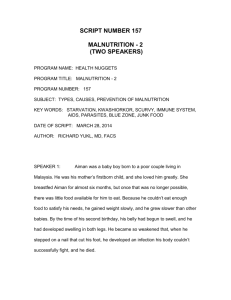Overview of malnutrition in emergencies
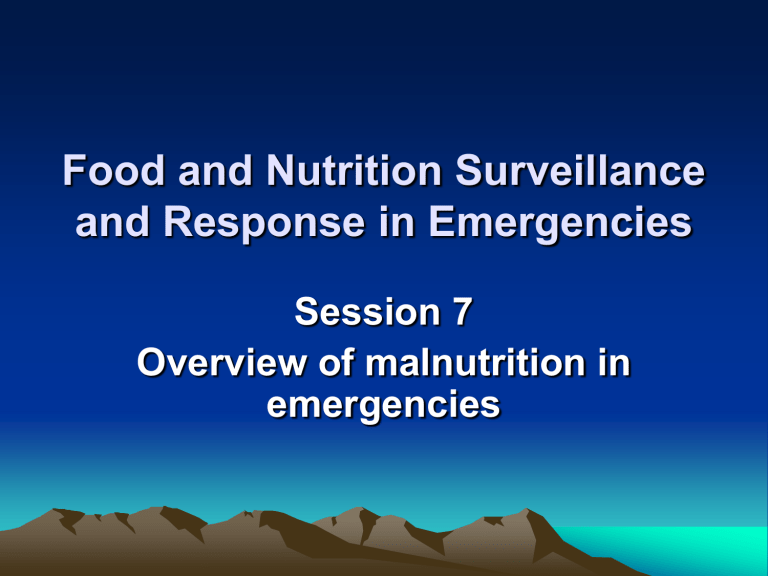
Food and Nutrition Surveillance and Response in Emergencies
Session 7
Overview of malnutrition in emergencies
Session overview
• Overview of malnutrition
– Types of malnutrition
– Strategies of addressing macro and micronutrient deficiencies (supplementation, fortification, dietary diversification and food preparation).
• Definitions
– Malnutrition
• Any condition caused by excess or deficient food energy or nutrient intake or by an imbalance of nutrients.
– Protein energy malnutrition
• A range of pathological conditions arising from coincident lack of varying proportion of protein and calories accruing most frequently in infant and young children and commonly associated with infections.
Types of malnutrition
• Kwashiorkor:
– A condition resulting due to protein deficient characterized by the oedema, skin and hair changes and usually low body weight for age
(<60% weight for age)
• Marasmus:
– A condition of starvation to which a child has adjusted by reduces growth.
• Marasmic kwashiorkor:
– A condition that develops when the child diet is low in total calories and protein.
CLINICAL SIGNS OF P.E.M.
• Marasmus
– Extreme low weight
– hunger
– Extreme wasting
– pot belly
– an old persons face
– irritability
– Fretfulness
• Marasmic-kwashiorkor
– extremely low weight
– oedema
– other signs of marasmus and kwashiorkor
• Kwashiorkor
– edema of legs, arms and face
– wasted weak muscles
– enlarged liver
– moon face
– poor appetite
– pale, sparse hair with weak roots
– pale and thin peeling skin
Micronutrient deficiencies common in emergency
• Micronutrient deficiency disorders:
– Iron deficiency (defined as low heamogblobin levels): the most prevalent in refugee camps the world-over due to lack of iron.
– Vitamin A deficiency is almost as widespread as anaemia, particularly among populations that depend of food aid.
– Zinc Deficiency is increasingly suspected in populations that live mainly on bulk grains for long periods.
Overview of malnutrition cont..
• Niacin deficiency or pellagra :
– is likely to occur among populations that use maize as their main food source.
• Thiamin deficiency or beriberi:
– observed in various refugee communities that primarily consume polished rice
• Vitamin C deficiency or scurvy:
– is even more localized than beriberi. Almost all outbreaks of scurvy in emergencies have been reported among Ethiopian and
Somalis population, principally those who have been cut off for months from camel milk markets.
• Iodine deficiency:
– Though uncommon in emergencies, iodine deficiencies may be a problem among populations living in isolated, inland or mountainous areas
Strategies of addressing deficiencies
• All displaced people should consume sufficient quantities of the following food:
– An appropriate staple food (usually cereal
– A protein-rich food (legumes)
– A rich source of energy (vegetable oil)
– An adequate intake of micronutrients
• Supplementation of the diets of those affected:
– usually with Unimix and other blended foods.
Strategies of addressing deficiencies continued...
• Fortification of foods:
– usually the cereal provided in the food ration
• Provision of blended foods:
– such as the corn-soya blend in the general ration
• Demonstrations on appropriated food preparation methods especially the preparation of the blended foods.
• Dietary diversification through kitchen gardening and the provision of micronutrient-rich
Indicators of Nutritional status
• Indicators of nutritional status: a) Height for age
– Measures degree of stunting or chronic malnutrition b) Weight for height
– Degree of wasting-estimates acute malnutrition and need for immediate action c) Weight for age:
– Reflects both stunting and wasting.
